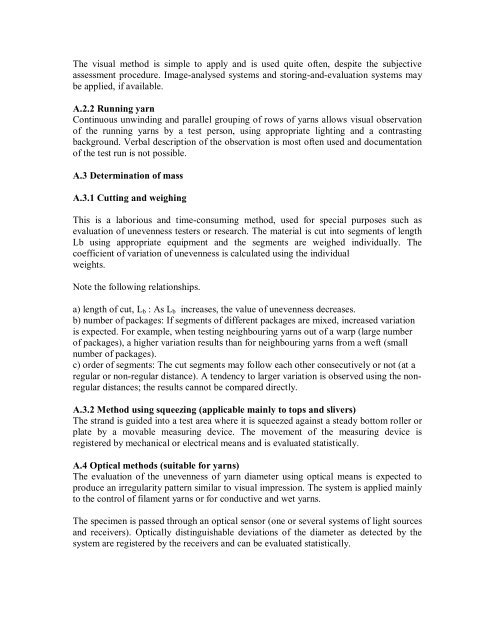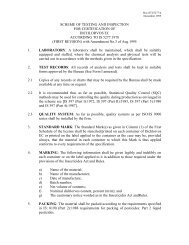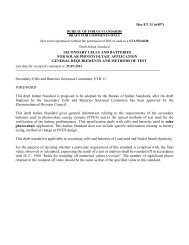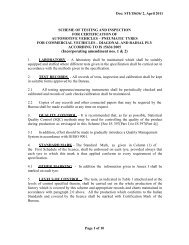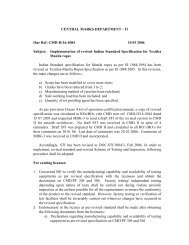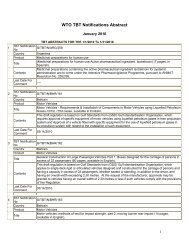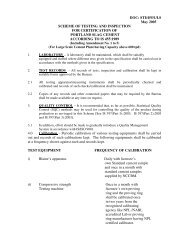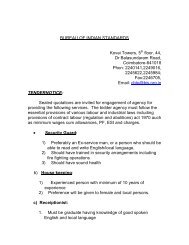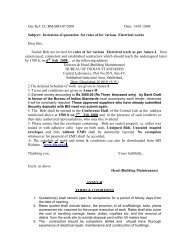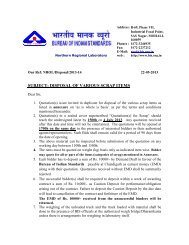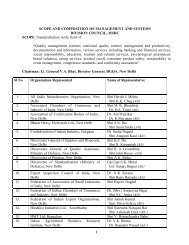यापक प रचालन मसौदे - Bis
यापक प रचालन मसौदे - Bis
यापक प रचालन मसौदे - Bis
You also want an ePaper? Increase the reach of your titles
YUMPU automatically turns print PDFs into web optimized ePapers that Google loves.
The visual method is simple to apply and is used quite often, despite the subjectiveassessment procedure. Image-analysed systems and storing-and-evaluation systems maybe applied, if available.A.2.2 Running yarnContinuous unwinding and parallel grouping of rows of yarns allows visual observationof the running yarns by a test person, using appropriate lighting and a contrastingbackground. Verbal description of the observation is most often used and documentationof the test run is not possible.A.3 Determination of massA.3.1 Cutting and weighingThis is a laborious and time-consuming method, used for special purposes such asevaluation of unevenness testers or research. The material is cut into segments of lengthLb using appropriate equipment and the segments are weighed individually. Thecoefficient of variation of unevenness is calculated using the individualweights.Note the following relationships.a) length of cut, L b : As L b increases, the value of unevenness decreases.b) number of packages: If segments of different packages are mixed, increased variationis expected. For example, when testing neighbouring yarns out of a warp (large numberof packages), a higher variation results than for neighbouring yarns from a weft (smallnumber of packages).c) order of segments: The cut segments may follow each other consecutively or not (at aregular or non-regular distance). A tendency to larger variation is observed using the nonregulardistances; the results cannot be compared directly.A.3.2 Method using squeezing (applicable mainly to tops and slivers)The strand is guided into a test area where it is squeezed against a steady bottom roller orplate by a movable measuring device. The movement of the measuring device isregistered by mechanical or electrical means and is evaluated statistically.A.4 Optical methods (suitable for yarns)The evaluation of the unevenness of yarn diameter using optical means is expected toproduce an irregularity pattern similar to visual impression. The system is applied mainlyto the control of filament yarns or for conductive and wet yarns.The specimen is passed through an optical sensor (one or several systems of light sourcesand receivers). Optically distinguishable deviations of the diameter as detected by thesystem are registered by the receivers and can be evaluated statistically.


